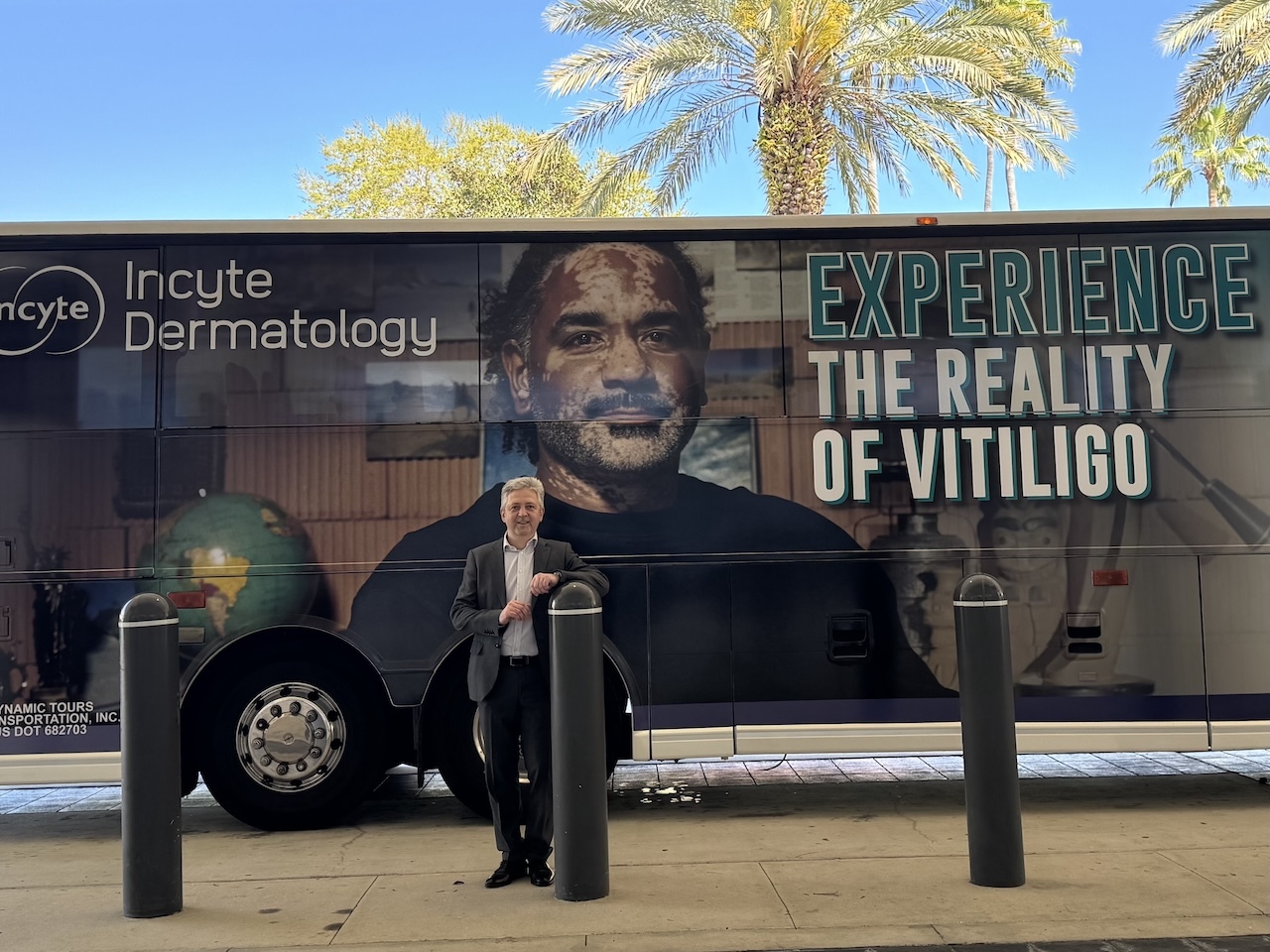New
Seeing Incyte’s “See What’s Possible” campaign — complete with larger-than-life vitiligo models at the AAD meeting in San Diego — was a milestone for our community.
For years, vitiligo flew below the healthcare industry’s radar. Today, it’s front-and-center: the first FDA-approved therapy is on the market, and more than 40 companies are investing in vitiligo R&D.
That momentum didn’t appear by chance; it grew from steady advocacy, data-driven storytelling, and a lot of patient and caregiver voices refusing to be invisible.
It’s proof that even a small non-profit like VRF can help shift perceptions and priorities across an entire field. We’re even considering a white paper on the journey, with the working title “How to Bring an Overlooked Disease to Pharma’s Attention.”
If you’d like to contribute insights or client-side perspectives, let us know!
— Yan Valle
CEO, Vitiligo Research Foundation | Author, A No-Nonsense Guide to Vitiligo

AAD, 2024

AAD, 2025
FAQOther Questions
- What are risks of oral and topical corticosteroids?
Corticosteroid drugs (like hydrocortisone, and others) are often used for treating vitiligo. By mimicing the effects of hormones your body produces naturally in your adrenal gla...
- Is there a link between vitiligo and depression?
Depression and anxiety are often linked with vitiligo, significantly impacting a person’s quality of life. The connection stems from the shared origin of the skin and brain duri...
- Which diseases most commonly accompany vitiligo?
Vitiligo is an autoimmune disease and is frequently associated with other autoimmune diseases, acccording to a 10-year study. The exact diseases that accompany vitiligo can vary...
Though it is not always easy to treat vitiligo, there is much to be gained by clearly understanding the diagnosis, the future implications, treatment options and their outcomes.
Many people deal with vitiligo while remaining in the public eye, maintaining a positive outlook, and having a successful career.
Copyright (C) Bodolóczki JúliaBy taking a little time to fill in the anonymous questionnaire, you can help researchers better understand and fight vitiligo.
